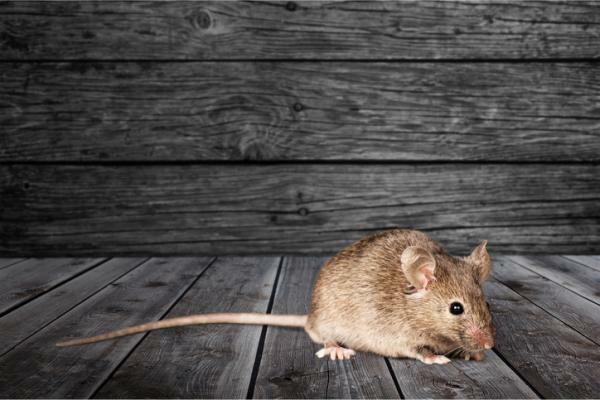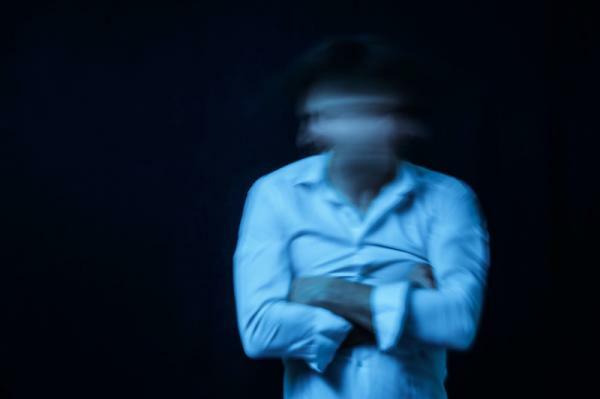
Specific phobias focused on animals or insects are the most common phobias in our society. Fear of mice or rats is present in 4.7% of the population, being more frequent in women. On the other hand, it is one of the animals that generates the most aversion, being between 75 and 90% of phobic animals.
People who have a serious phobia towards rats can avoid certain spaces or stop doing activities that they used to do, with the objective of avoiding the encounter with this animal, for example avoiding taking the metro in the city, because there are possibilities that they may meet a mouse or rat. Thus, the fear of mice or musophobia ends up conditioning their day to day, causing limitations in the different areas of a person's life, such as work, social and / or personal.
If you are interested in understanding what this phobia consists of, keep reading this Psychology-Online article, where the fear of mice or musophobia: symptoms, causes and treatment.
Index
- What is the fear of mice called? Musophobia
- Why am I afraid of mice?
- Fear of mice: symptoms
- How to overcome the fear of mice?
What is the fear of mice called? Musophobia.
The fear of mice in psychology is also called musophobia and is part of anxiety disorders, being considered a specific phobia. The DSM-V establishes that specific phobias must be classified according to the phobic stimulus, in this case we are faced with an animal phobia. The fear of mice or musophobia implies a afraid intense and irrational towards an object or situation and gives rise to irrational thoughts when faced with the stimulus.
In specific phobias there is a physiological activation which gives rise to a set of anxiety symptoms such as rapid heartbeat or sweating. In addition, a set of catastrophic thoughts around the phobic object. Due to this physiological activation and the set of catastrophic thoughts that generate high anxiety, the person tries at all costs to avoid situations in which it is possible that this phobic stimulus can Appear.
Why am I afraid of mice?
The fear of mice tends to appear in childhood, generally before the age of 9, however it can develop at any stage of life. It is not an irrational thought to think that rats or mice are carriers of numerous diseases and it is normal that there is a certain disgust and concern towards this animal. This rejection is transmitted from parents to children and this socio-cultural component can be a causal triggering effect of this phobia.
However, the main reason why a person can develop musophobia is from a traumatic experience experienced, observed or by transmission of information, where another person has shared stories or anecdotes with threatening or dangerous content in reference to this animal. Against this, a classical conditioning, where the person associates the rat with an aversion response.
Fear of mice: symptoms.
The fear of mice is made up of the symptoms that occur in specific or simple phobias, what changes between the different phobias is the stimulus that causes the irrational fear. The set of symptoms appear when the person is exposed to the animal or imagines the situation in which she can find it, thereby producing anticipatory anxiety.
According to the DSM-V the symptoms presented in the phobic disorder in mice, fear of mice or musophobia are the following:
- Presence of intense fear or anxiety before a stimulus that triggers it.
- The phobic object or situation provokes an immediate fear or anxiety reaction practically every time the stimulus is presented.
- The person seeks with all his effort avoid or resist actively object or situation.
- The fear or anxiety presented elicits a disproportionate response to the real danger posed by the trigger.
- The presence of fear and anxiety are persistent, usually lasting six or more months.
- It generates a clinically significant discomfort, as well as a social, occupational deterioration and in other areas of the person's life.
Specific Phobia Disorder can lead to a panic attack.
How to overcome the fear of mice?
To overcome the fear of mice or musophobia, the best option is to go to a specialist in clinical psychology. The most effective therapy is cognitive-behavioral therapy. The following are the most effective cognitive behavioral therapy techniques for treatment of fear of mice or musophobia.
Cognitive-behavioral therapy: exposure technique
The treatment considered most effective in the treatment of specific phobias is the exposure technique, comprised within the cognitive behavioral therapy. This method seeks to desensitize the person to the feared stimulus and for this, the person must expose himself "in vivo" or in imagination to the dreaded stimulus. To work on it, the person together with the therapist establishes a hierarchy of situations from lowest to highest difficulty that bring you closer to the final goal, being with a mouse without showing an intense fear and irrational. A possible example of a hierarchy to overcome the fear of mice could be the following:
- See a picture of a mouse
- Touch a stuffed mouse
- Watch a documentary about mice
- Go to a store to see the mice in cages from afar
- Go to a store to see the mice in cages from closer
- Touch one of the mice
This could be an example of hierarchy construction, however many more steps are usually established.
Cognitive-behavioral therapy: cognitive restructuring
As we have previously pointed out, in the face of specific phobias, a set of irrational thoughts around the feared object or situation tend to be associated. It is necessary to work on this set of thoughts to be able to replace them with healthier and more rational ones. Cognitive restructuring allows identify irrational thoughts, reflect on them, see their irrationality and look for alternatives in front of them, exchanging them for positive thoughts.
Cognitive behavioral therapy: relaxation techniques
Specific phobias generate high anxiety and therefore it is advisable to provide the patient with strategies for anxiety control, such as the abdominal breathing technique or the Jacobson's relaxation technique. Returning to the exposure technique, it is also necessary to emphasize that between the exposure from one hierarchy to the next it is important to these relaxation techniques, in order to reduce anxiety levels and allow the person to continue working on overcoming the fear of mice.
Pharmacotherapy
On many occasions, the high anxiety produced by the phobic stimulus prevents us from working on its exposure and on the restructuring of our thoughts. Faced with this, it is common to administer anxiolytic or antidepressant drugs in order to lower anxiety levels and start working on the disorder.
This article is merely informative, in Psychology-Online we do not have the power to make a diagnosis or recommend a treatment. We invite you to go to a psychologist to treat your particular case.
If you want to read more articles similar to Fear of mice or musophobia: symptoms, causes and treatment, we recommend that you enter our category of Clinical psychology.
Bibliography
- American Psychiatric Association. (2014). DSM-5. Diagnostic and Statistical Manual of Mental Disorders. Barcelona: Masson.
- Capafons Bonet, J. I. (2001). Effective psychological treatments for specific phobias. Psicothema, 13 (3).
- Fernández, M. Á. R., García, M. I. D., & Crespo, A. V. (2012). Cognitive Behavioral Intervention Techniques Manual. Desclée de Brouwer.


